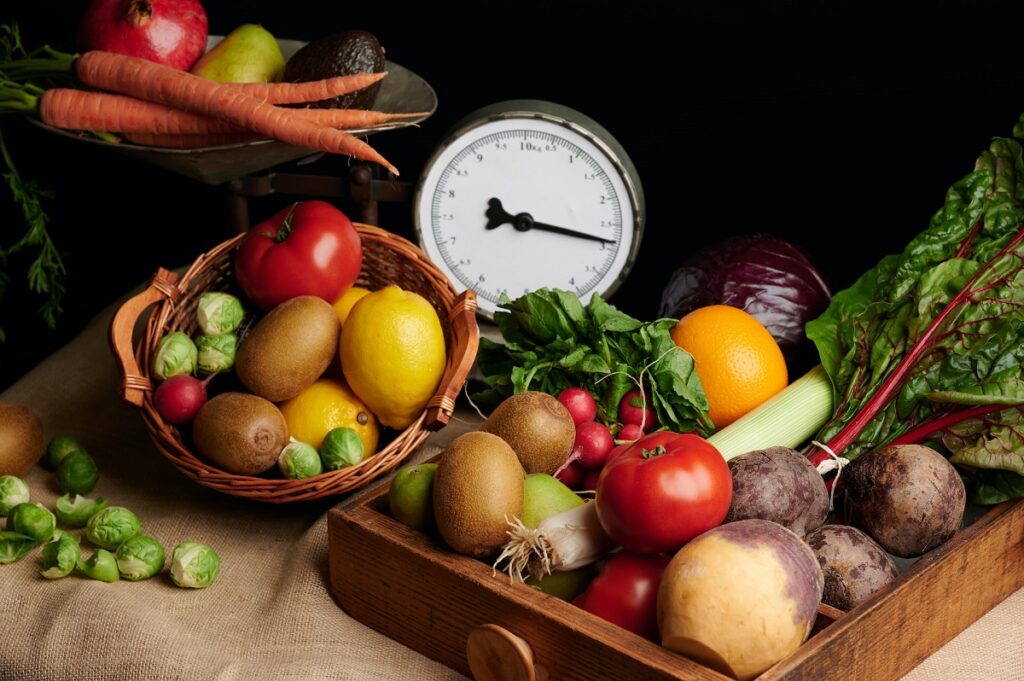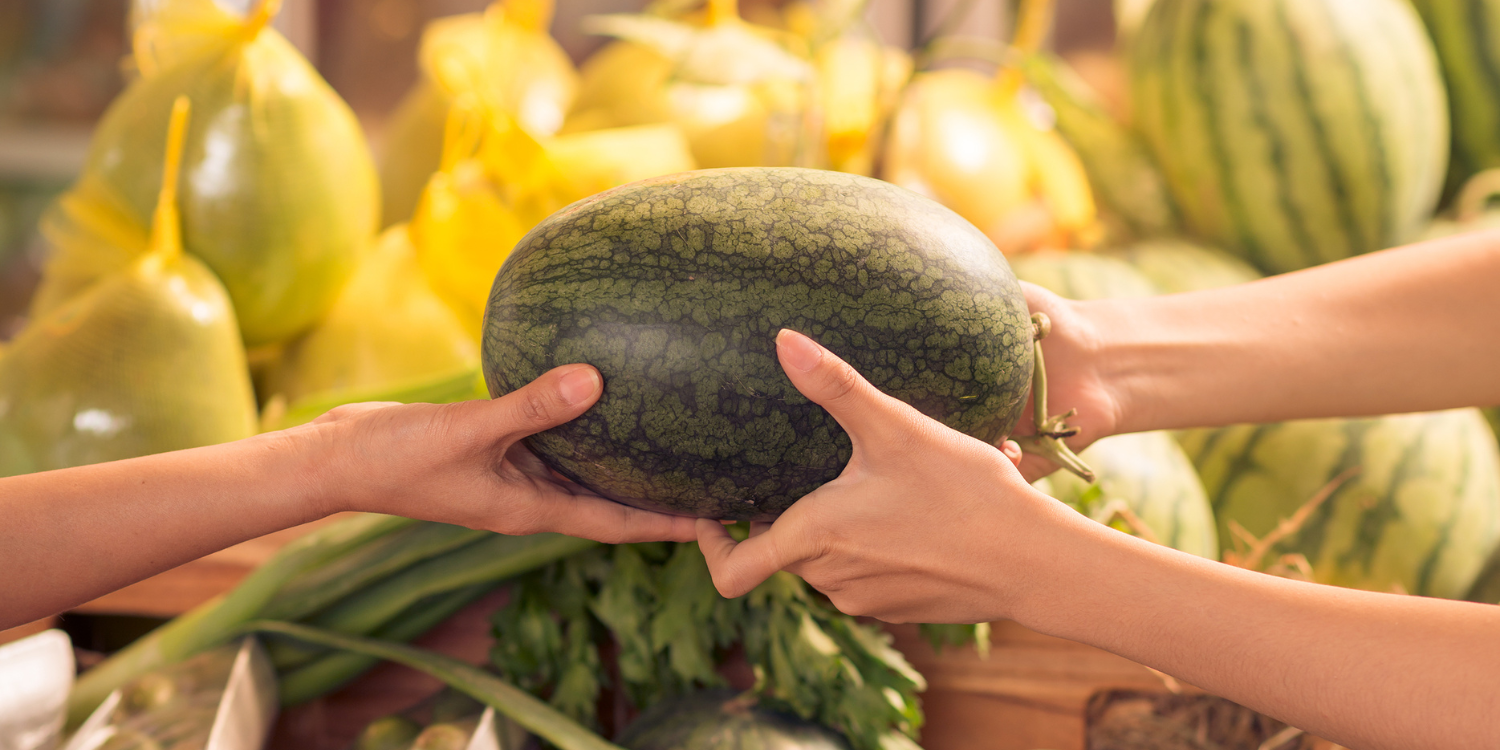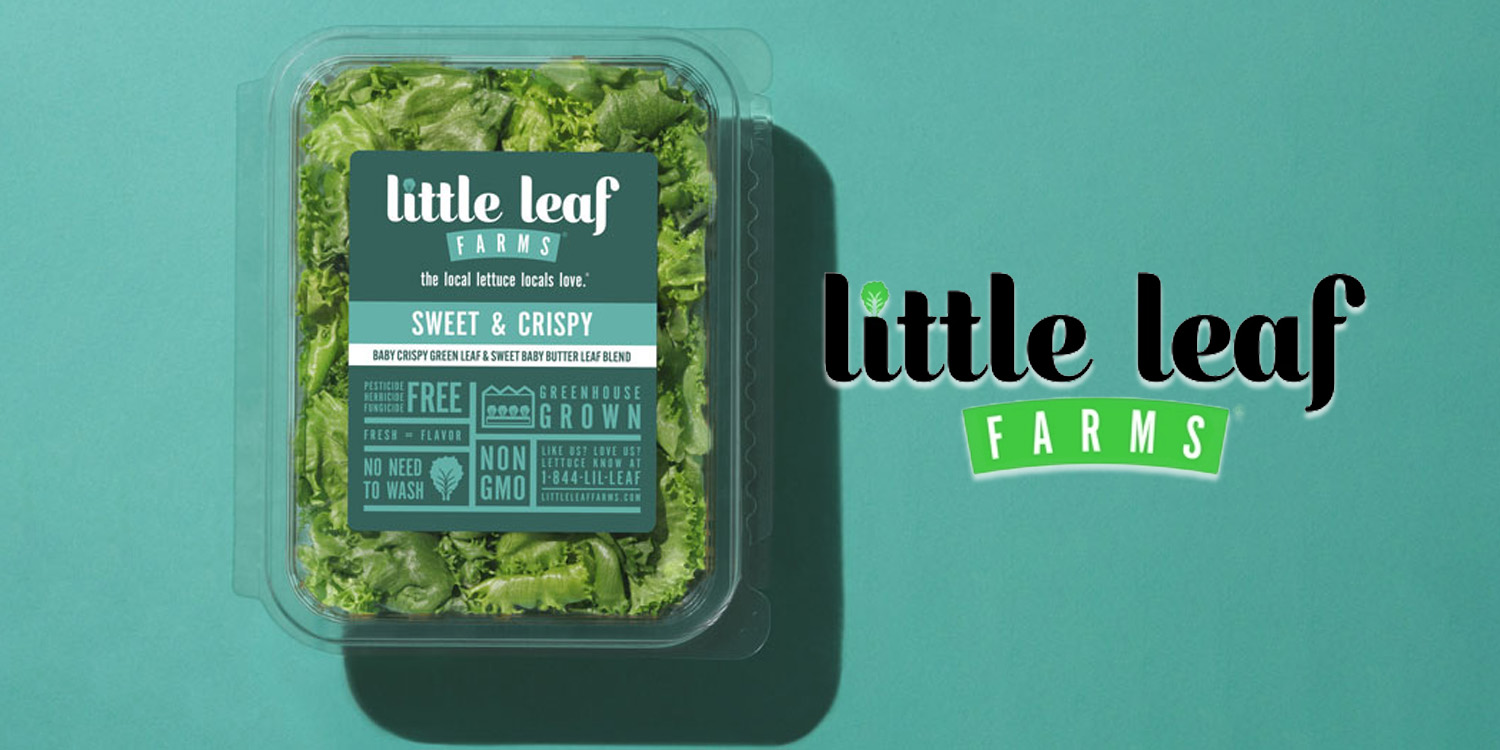As we progress further into the 21st century, there is a surprising yet comforting trend beginning to emerge within the realms of agriculture and gastronomy.
Consumers, it appears, are demonstrating an increasing interest in traditional, heritage produce.
This shift appears to be a conscious deviation from the mass-produced, homogenized offerings that once monopolized our supermarket aisles.
The growing appeal of these heirloom selections is not merely nostalgic; it serves as a testament to the values of biodiversity, sustainability, and top-quality flavor.
We delve deeply into this topic to uncover the reasons behind this culinary regression to progression.
Join us as we explore this fascinating resurgence and its impact on the future of food consumption.
Contents
- Heritage Produce: Why Consumers Are Seeking Out Tradition
- Understanding Heritage Produce
- What Constitutes Heritage Produce?
- Why are Consumers Turning Towards Traditional Diversity?
- Unveiling the Health Benefits of Heritage Produce
- Heritage Produce Vs. Mass-Produced Crops
- The Socio-Economic Impact of Choosing Heritage Produce
- The Unique Tastes and Flavors of Heritage Produce
- Unearthing the Sustainability Factor of Heritage Produce
- The Role of Small-Scale Farmers in the Heritage Produce Resurgence
- Final Thoughts
Heritage Produce: Why Consumers Are Seeking Out Tradition
Consumers are seeking out heritage produce due to increased interest in sustainable farming methods and attention to maintaining biodiversity and quality of crops. Knowledge of their health benefits, unique taste, and the commitment to preserving traditional farming practices adds to their appeal. Importantly, buying heritage produce also allows consumers to directly support small-scale farmers and local economies.
Delving deeper into this discussion, we will explore the significant role of heritage produce in our food systems, the stories they carry and their potential in fostering culinary diversity.
We’ll assess how the surge in their popularity impacts global market trends, as well as the obstacles that small-scale farmers face in their cultivation and distribution.
This insightful journey underlines the importance of our choice of produce not just in our diet, but on a much larger, global scale – sparking further conversation about the future of food and farming.
Keep reading to better understand these fascinating dynamics.
Understanding Heritage Produce
As our understanding of food and nutrition evolves, we see a shift towards foods that not only provide sustenance but also bring greater health benefits and a sense of connection to our roots.
One such trend is the move towards heritage produce.
Heritage or heirloom produce refers to fruits, vegetables, and grains that are grown from seeds that have been passed down from generation to generation.
Unlike hybrid or genetically modified organisms (GMO), heritage produce is cultivated using traditional farming methods and seeds that are open-pollinated.
These old-world crops have been preserved, protected, and cherished by small-scale farmers who prioritize diversity and quality over commercial yield.
This results in produce that captures the essence of flavor, texture, and nutritional richness that is often lost in mass-produced crops.
Heritage produce inherits the genuine taste, incredible variety, and richness of nutrients from its lineage, contributing to its ascending popularity among health-conscious consumers and gourmet chefs around the world.
To further support this idea, numerous studies and trials have indicated that heritage produce often contains higher levels of vitamins, minerals, and antioxidants than their commercially-produced counterparts.
This potentially result in benefits like improved digestion, boosted immunity, better vision health, and even mitigation of chronic disease risks.
– The History of Heritage Produce
The concept of heritage produce is not new.
In fact, it dates back to the early days of agriculture.
Early farmers saved and passed down seeds from successful crops.
They valued these seeds for their resilience, nutritional value, and for producing crops with unique and favorable characteristics.
Modern industrial agriculture, focusing on high yield and uniformity, slowly nudged these traditional varieties to the brink of extinction.
Thankfully, in recent years, there has been a resurgence of interest in these old-world crops, thanks to the efforts of farmers preserving heritage seeds and consumers consciously making the move towards more sustainable and nutritionally rich food choices.
If you’re interested in learning more about heritage produce and how we produce food in general, take the time to watch this informative video:
From this enlightening resource, you can pick up on the vital elements of food production and the importance of preserving traditional techniques.
You will also gain a deeper appreciation for the work farmers do to provide us with diverse and nutritious food choices.
– The Beauty of Biodiversity
One critical aspect of heritage produce is its contribution to biodiversity.
In a world where commercial crops are becoming increasingly homogenized, heritage produce provides a refreshing and essential contrast.
Each variety of heritage produce is unique with its distinct taste, texture, color, and nutrient profile.
This not only contributes to a more colorful and varied diet but also provides ecological benefits.
Diverse ecosystems are generally healthier and more resilient to changes and threats such as pests, diseases, and climate change.
In supporting heritage produce, we are promoting biodiversity and in turn, contributing to a healthier, more sustainable world.
What Constitutes Heritage Produce?
Heritage produce, also known as heirloom produce, refers to a variety of fruits, vegetables, and grains that have been cultivated for generations.
These crops are passed down through generations of farmers and gardeners, carefully preserved for their unique qualities.
Typically, heritage varieties are open-pollinated, meaning they’re naturally pollinated by insects, birds, wind, or other natural means.
– Characteristics of Heritage Produce
Heritage crops usually have distinctive flavors, colors, and shapes that set them apart from commercially grown varieties.
Their diverse range includes everything from crimson-striped heirloom tomatoes to rainbow-colored Swiss chard and black-emerald Tuscan kale.
Another characteristic of these heirloom varieties is their adaptability to specific climates and pests, benefiting the local ecology.
Heritage crops usually have distinctive flavors, colors, and shapes that set them apart from commercially grown varieties.
This spectrum of flavors and appearances can be attributed to the fact that these crops have evolved over time, adapting to different locations, climates, and growing conditions.
Aside from their visual and culinary appeal, heritage produce is valued for its contribution to biodiversity, preserving genetic diversity that could aid in future crop development.
– Contrast to Hybrid and GMO Crops
In contrast, commercial farming often involves hybrid or genetically modified (GMO) crops designed for uniformity and high yield.
While these methods can increase productivity, they often result in generic, bland-tasting produce, and risk narrowing the gene pool.
Nearly all of the fruits and vegetables seen in your local supermarket are the result of these processes and are a stark contrast to heritage produce.
Nearly all of the fruits and vegetables seen in your local supermarket are the result of these processes and are a stark contrast to heritage produce.
Heritage produce, on the other hand, celebrates variety in every sense of the word – in shapes, flavors, colors, and even growing habits.
Each variety of heritage crop has its own unique story, shaped by the families or communities who cultivated them over the generations, and by the characteristics that specifically adapted it to its surroundings.
Ultimately, heritage produce represents not just a return to traditional farming methods, but also a fruitful and tasty way to preserve our agricultural heritage.
Why are Consumers Turning Towards Traditional Diversity?
In today’s fast-paced world, a marked shift in consumer choices is observed, with a leaning towards traditional diversity.
People are yearning for authentic experiences and foods that echo cultural heritage.
Heritage produce, often known as heirloom varieties, is capturing significant interest.
Unlike mass-produced, genetically-modified options, these are varieties passed down through generations, reflecting rich agricultural practices.
– Reconnecting with Cultural Roots
A primary reason for the surge in interest in heritage produce is the desire to reconnect with cultural roots.
Consumers feel a compelling need to learn their ancestral culinary landscape and connect with the underpinning traditions of their community.
In the process, they derive a unique sense of belonging and a calming rhythm against the hasty momentum of the modern world.
By opting for heritage produce, they are rekindling cultural identities and historical narratives, which are intrinsically linked to specific fruits, vegetables, and grains.
By opting for heritage produce, consumers are rekindling cultural identities and historical narratives, which are intrinsically linked to specific fruits, vegetables, and grains.
This sentiment has fuelled demand for heritage cooking workshops, recipe sharing, and family meals made of heirloom produce.
It is not merely a culinary choice; it’s a journey towards understanding origins, tracing root practices, and cherishing age-old traditions.
– The Allure of Novelty and Variety
Beyond the cultural appeal, consumers are increasingly attracted to the novelty and variety offered by heritage produce.
Common supermarket stacks are dominated by mass-produced, limited varieties that lack diversity.
However, heritage crops come in an array of shapes, sizes, textures, and hues – presenting a plethora of unique, tantalizing options.
The availability of ingredients such as purple carrots, golden beets, Cherokee purple tomatoes, blue potatoes, watermelon radish and others that are not found in the traditional supermarket aisle is pushing consumers to explore new culinary horizons.
Using heritage produce allows the consumers to experiment with their dishes, offering a delightful series of gastronomical experiences which are also a treat to the eye due to their vibrant colors and unique shapes.
Such diversity on our plates introduces new flavors, reawakens our taste buds, and adds a dynamic element to our food culture.
It anchors a prospect of rediscovering food, where every meal brings a sense of novelty coupled with a warm nostalgic embrace.
Unveiling the Health Benefits of Heritage Produce
Over the years, there has been a significant shift in consumer preferences towards heritage produce from staple crops.
This trend can be attributed to multiple factors, but one of the major reasons is the health benefits associated with these types of fruits and vegetables.
– Nutritional Density in Heritage Produce
The term ‘nutritional density’ refers to the concentration of essential nutrients in a food item.
In case of heritage produce, they boast a higher nutritional density when compared to their commercially grown counterparts.
These ancient varieties of fruits and vegetables contain higher levels of vitamins and minerals, all of which are vital for the proper functioning of our bodily systems.
For instance, heritage tomatoes are packed with large quantities of lycopene- a powerful antioxidant that is believed to fight off cancer cells
These ancient varieties of fruits and vegetables contain higher levels of vitamins and minerals, all of which are vital for the proper functioning of our bodily systems.
This concentration of essential elements and compounds is not just restricted to tomatoes.
All varieties of heritage produce, ranging from heritage carrots to ancient types of potatoes, share the same, and often even higher, levels of nutritional density.
– The Absence of Harmful Pesticides and GMOs
Another significant health benefit that cannot be overlooked is the absence of harmful pesticides and GMOs in heritage produce.
Since these crops have been grown and reproduced in a traditional way, they are often grown using organic farming methods.
Genetically Modified Organisms (GMOs) and chemically-laced pesticides are a common sight in today’s industrial farming landscape.
When it comes to heritage produce, these elements are entirely absent, making them a safer choice for consumption.
Consumers are becoming increasingly cautious about their dietary choices.
The advent of heritage produce offers an opportunity to choose healthier, pesticide-free food options that are not only delicious but also full of essential nutrients and devoid of harmful substances.
– Heritage produce and Digestive Health
The high fiber content present in heritage produce also contributes to its nutritional value and adds to digestive health.
A diet that includes a significant portion of heritage fruits and vegetables aids in digestion and contributes to the overall health of the gut.
Fiber, both soluble and insoluble, is known for its beneficial effects on gut health.
From promoting regular bowel movements to reducing the risk of digestive disorders, fiber-rich foods like heritage produce play a key role in maintaining a healthy digestive system.
From promoting regular bowel movements to reducing the risk of digestive disorders, fiber-rich foods like heritage produce play a key role in maintaining a healthy digestive system.
Therefore, including more heritage produce in our diet is not only about embracing traditional agricultural practices.
It’s also about making conscious, healthier choices for our overall wellbeing, making them a desirable food option for consumers worldwide.
When we talk about the benefits of heritage produce, it goes beyond just their fresh and unique flavors.
The main allures include nutritional density, the absence of harmful pesticides and GMOs, and the beneficial impacts on our digestive health.
Heritage Produce Vs. Mass-Produced Crops
The topic of heritage produce versus mass-produced crops is becoming increasingly relevant in today’s world, especially as increasing numbers of consumers are showing a keen interest towards sustainability and traceability of their food sources.
Before delving into the specifics, let us first comprehend the fundamental differences between the two categories.
Heritage produce, also known as heirloom or heritage crops, refers to plants that are grown from the seeds passed down through generations.
In contrast, mass-produced crops are typically grown using conventional methods, often involving the use of synthetic fertilizers and genetically modified organisms (GMOs).
This striking difference in the underlying cultivation methods strongly impacts the quality, taste, nutritional content, and overall appeal of the produce obtained from the two types of farming methods.
– Nutritional Content
Research studies conclusively highlight that heritage crops tend to have higher nutritional content compared to mass-produced crops.
This is largely due to the fact that heirlooms grow from seeds that have been naturally selected over many generations for their superior quality.
Further, the farming practices followed in heritage farming – such as crop rotation, organic pest control, natural fertilization among others – contribute towards enhancing the nutritional value of the final produce.
– Flavor
Undoubtedly, flavor is one area where heritage crops outshine mass-produced ones.
Not only are heritage vegetables more flavorful due to their diverse genetics, but they also tend to be juicier and have a better texture.
On the other hand, mass-produced crops are often found lacking in flavor due to heavy dependence on artificial growth and ripening techniques.
Naturally ripened heritage crops, on the other hand, develop complex flavors and fragrant odors, thus offering an overall better tasting experience.
– Supporting Biodiversity and Environment
Generally, heritage produce farming supports biodiversity and is environmentally sustainable.
These traditional varieties of crops are adapted to the local soil and climate conditions, hence, they do not require heavy chemical input for their growth.
Mass-produced crops, with their heavy reliance on synthetic pesticides and fertilizers, contribute significantly to environmental pollution and degradation.
– Cost and Accessibility
While there’s no denying the many benefits of heritage produce, one area where mass-produced crops gain an upper hand is the ease of accessibility and cost.
Mass-produced crops are generally more readily available and cheaper, primarily because of the economies of scale.
However, this scenario is gradually changing as more consumers are exhibiting a willingness to pay a premium for high-quality, naturally-cultivated heritage produce.
Surely, as demand rises and more farmers adopt sustainable farming practices, the price difference is expected to minimize further.
The Socio-Economic Impact of Choosing Heritage Produce
Choosing heritage produce not only demonstrates a commitment to environmental sustainability and healthier eating habits, but also significantly supports local economies and small-scale farming communities.
How does this occur, one might ask?
The process begins with purchase decisions made by consumers.
By choosing to buy heritage produce, they are indirectly investing in local economies.
This is because heritage produce, as opposed to mass-produced crops, tends to be cultivated by small-scale local farmers.
Instead of money going towards supporting large industrial farms that can have troubling ecological footprints, funds are allocated to local households, aiding in the development and upkeep of these communities.
By choosing to buy heritage produce, they are indirectly investing in local economies.
This cyclical process has direct and significant impacts on the growth, wealth distribution, and general wellbeing of regional economies.
Ultimately, this way of shopping strengthens the financial stability of these small farming communities and helps them thrive.
– Job Creation and Skill Preservation
Heritage agriculture also creates and sustains jobs at a local level.
This kind of farming typically requires more hands-on labor compared to commercial, mechanized agriculture, therefore, results in increased employment opportunities.
It’s important to note that these aren’t just any jobs.
Farming heritage produce often requires traditional farming techniques and knowledge, hence this leads to the preservation of age-old skills and expertise that could be easily lost in the age of industrial agriculture.
It’s important to note that these aren’t just any jobs.
Essentially, these jobs have a value-added quality, bringing social security and cultural preservation under the umbrella of economic impact on local communities.
Lastly, by practicing and preserving these traditional farming techniques, local farmers also facilitate a form of cultural resilience and identity preservation within their small-scale communities.
The Unique Tastes and Flavors of Heritage Produce
Heritage produce, often referred to as heirloom vegetables, fruits, and herbs, bestows an exceptional catalogue of unique tastes and flavors that provide a delightful culinary experience often absent in mass-produced varieties.
With their complex flavor profiles, the delightful taste and aroma of these old-time favorites can be credited to their genetic diversity and traditional growth practices.
This invites us to explore the distinct taste attributes of some popular heritage produce.
– Sweet Flavor of Heirloom Tomatoes
Heirloom tomatoes are a popular heritage produce known for their intensely sweet or tangy flavors that are often missed on most supermarket shelves.
Their exceptional flavor can be attributed to the handpicked selection of seeds over many generations, capturing the perfect balance of acidic and sugar content.
Heirloom tomatoes are a popular heritage produce known for their intensely sweet or tangy flavors that are often missed on most supermarket shelves.
In supporting this statement, it is valid to state that the farming technique of including multiple varieties and natural selective growth supports retaining the heirloom tomatoes’ original and high-quality taste.
– Earthy Taste of Heritage Carrots
Another much-loved heritage produce is the deep-coloured and robustly flavoured heritage carrots, which offers a punch of sweetness compared to their uniform supermarket counterparts.
These carrots offer a more complex flavor profile, consisting of earthy and sometimes peppery nuances, enriching every bite.
– Flavor Diversity in Heritage Apples
Heritage apples are a broad genre in themselves, with each variety offering a unique flavor palette, from sweet and honeyed to sharp and spicy.
This range of flavors offer much more than mainstream apple varieties which have been selectively bred for uniform sweetness, often sacrificing complex flavors in the process.
Heritage apples are a broad genre in themselves, with each variety offering a unique flavor palette, from sweet and honeyed to sharp and spicy.
In substantiation of this claim, research findings verify that a wide range of apple cultivars were cultivated generations ago, each with their unique taste, texture and character profile, which are now finding their way back into farmers’ markets and food enthusiasts’ kitchens alike.
– Impressions Created by Heritage Produce
The overall sensory experience of eating heritage produce is often described as an ‘explosion of flavors’ by food enthusiasts worldwide.
This makes them an ideal choice for culinary experimentation, allowing professional chefs and home cooks to introduce new dimensions to their dishes.
It is the outstanding flavor of heritage produce and its ability to create lasting impressions on our taste buds that sets it apart from commercially grown, mass-produced varieties.
The extraordinary tastes and flavors of heritage produce contribute to a unique culinary experience, encouraging our food culture to cherish and preserve this biological and cultural heritage.
Unearthing the Sustainability Factor of Heritage Produce
Heritage produce has garnered the appreciation of consumers, farmers, and food enthusiasts for a variety of reasons, including a high sustainability factor.
This aspect of heritage produce is not just about environmental concerns, it also boils down to preserving agrobiodiversity for future generations.
The first step to understanding this is to acknowledge that our conventional farming methods, though productive, compromise on biodiversity.
Mass production of a small variety of crops not only reduces soil health but also increases dependence on pesticides, artificial fertilizers, and extensive irrigation systems.
Heritage crops, on the other hand, are quite self-sufficient and help maintain the health of the farming ecosystem.
– Less Dependence on Chemicals
Heritage crops are known for being hardy and resilient.
Their inherit traits often resistance them to various diseases and pests, thus reducing the need for chemical-based pesticides and fertilizers.
This property of heritage crops reduces the environmental footprint of farming and makes it a more sustainable choice.
Notably, a shift to heritage crops can eliminate the requirement of harmful chemicals that often seep into our groundwater, causing various health problems.
Avoiding these chemicals and toxins can lead to healthier soil, waters and ecosystems.
A shift to heritage crops can eliminate the requirement for harmful chemicals that often seep into our groundwater, causing various health problems.
Support for this statement can be found in several research studies.
Some academics have noted that the resilience of heritage crops is not only better for the environment, but can also result in a healthier and more sustainable food supply chain.
– Water-Smart Cultivation
Another sustainability factor of heritage crops is their water-smart nature.
Heritage varieties have evolved over time to withstand conditions of their native regions, including dry conditions.
Thus, they require less water than mass-produced crops, making them an ideal choice in areas where water scarcity is a significant issue.
This trait goes hand in hand with the goals of sustainable farming, making heritage produce a sensible choice for those looking to cultivate their foods.
In these ways and more, heritage crops play a crucial role in ensuring the sustainability of our food systems.
Heritage varieties, with their water-smart nature, make an ideal choice in areas where water scarcity is a significant issue.
This further justifies the case for a shift from mass-produced, water-intensive crops to more resilient and water-efficient heritage varieties.
In a world facing increasing water scarcity, this is a factor that simply cannot be ignored.
The Role of Small-Scale Farmers in the Heritage Produce Resurgence
Small-scale farmers have a pivotal role to play in the heritage produce resurgence.
Their farming techniques and unique, traditional produce varieties hold the key to preserving biodiversity in the agriculture industry.
Without their involvement, many heritage produce strains may fade away, leading to the loss of valuable genetic diversity and altering our culinary landscape permanently.
– Preservation of Genetic Diversity
The central role of small-scale farmers in the heritage produce resurgence is linked to the preservation of genetic diversity.
These small-scale farmers often cultivate traditional varieties of crops that have been passed down through generations.
These crops are adapted to local soils and climates and have a unique resistance to pests and diseases.
The cultivation of these crops presents a valuable solution to the challenge of maintaining biodiversity in a climate change-laden world.
This is where small-scale farmers come in, as their age-old farming practices ensure the continuation of these heritage produce varieties.
Small-scale farmers play a vital role in maintaining genetic diversity through the preservation and cultivation of heritage produce.
By growing these locally adapted crops, they are able to maintain the genetic diversity that is crucial to food security and agricultural resilience.
Furthermore, these traditional varieties often have unique, desirable characteristics that cannot be replicated in mass-produced crops.
– Fostering Sustainability
Beyond preserving biodiversity, small-scale farmers also foster sustainability within the food system.
Small-scale farming typically requires fewer resources than large-scale operations and tends to be more environmentally friendly.
Investing time and resources into smaller, diverse crop varieties is a sustainable practice, particularly in a world grappling with climate change.
Moreover, by maintaining smaller, more diverse crops, they are perpetuating an agricultural system that is finely tuned to its environment and therefore more resilient.
By fostering agricultural diversity, small-scale farmers contribute to a sustainable and resilient food system.
This resilience is invaluable in shielding our global food system against the threats of pest outbreaks, extreme weather events, and other shocks posed by climate change.
These farmers also uphold centuries-old farming traditions and food cultures, thereby contributing to the preservation of cultural heritage and local community identity.
– Supporting Local Economies
Moreover, these small-scale farmers significantly contribute to local economies and rural development.
The work of these farmers often goes beyond just farming; they’re also involved in processing, packaging, marketing, and distributing their produce.
They engage in a lot of value-adding activities that create jobs and boost local economies.
Their activities encourage a circular economy, where everything that is harvested is used and nothing is wasted.
Also, buying from small-scale farmers means supporting independent businesses, which in turn supports local economies.
Small-scale farmers’ engagement in various value-adding activities greatly contributes to local economies and rural development.
Furthermore, the nutritional quality of heritage produce is often superior to that of mass-produced foods, promoting healthier communities.
All these factors combine to elevate the role of small-scale farmers in their communities, making them crucial players in the agricultural sector and the resurgence of heritage produce.
Final Thoughts
Overall, it is clear that heritage produce offers numerous advantages over mass-produced crops.
Not only do they provide a wider range of health benefits, they also support local economies, promote sustainability, and help in preserving traditional agricultural diversity.
By choosing heritage produce, consumers can enjoy unique tastes and flavors and also contribute to a resurgence of small-scale farming practices.
The added feasibility of growing your own heritage produce further extends its reach and appeal.
Therefore, the shift towards heritage produce is not merely a nod to the past, but a conscious step towards a healthier, more sustainable future.




















